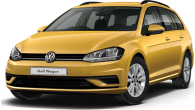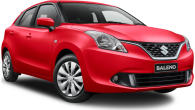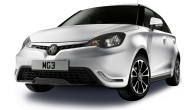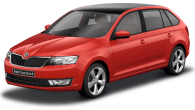French carmaker Peugeot has long been highly regarded in Australia.
The company won respect for its efforts in the early Round Australia Trials, regarded as a true test of a car at the time.
But in recent times Peugeot has had a more checkered time with the brand not always well-supported. Consequently it has lost some of the lustre it once enjoyed.
Build quality has been an issue with French cars and Peugeot has suffered from inconsistent quality, which wasn't always helped by a lack of support from dealers or importers.
MODEL WATCH
THE 307 replaced the 306 in 2001 and came well-credentialed, having been voted European Car of the Year for 2002.
The 306 was regarded as a small car, but the 307 was a size larger, almost a mid-sized model.
Along with the extra size came an airy and roomy interior, which provided comfortable accommodation for four, or five at a pinch.
French cars are usually renowned for their comfortable ride, but the 307 didn't fit the mould. The ride was more nervous and didn't have the absorbency of other Peugeots.
On the road it showed a nice balance. It had good grip, communicative steering and a solid braking feel. Overall it was a nice package.
Two petrol engines and a diesel were offered in the 307. The base 1.6-litre double overhead cam four-cylinder produced 80kW and 147Nm, and the 2.0-litre generated 100kW and 190Nm. The 2.0-litre single overhead cam diesel had 66kW and 206Nm.
The transmission choices were a five-speed manual, which had a rather imprecise shift, and a four-speed auto, which was a limiting factor when it came time to get up and go.
In auto form the 1.6-litre 307 was best described as lethargic. Even with the right foot buried in the carpet and the airconditioning off, the acceleration could be measured using the progress of the sun.
In manual form it was a different story.
With relatively short gearing the five-speed manual car got off the line quickly and with good torque spread it was easy to drive. It took 11 seconds or so to reach 100 km/h from a standstill and another 7.5 seconds to cover the standing 400m dash.
The 2.0-litre was a nice little performer and the turbo-diesel delivered at the pump.
The 307 came in hatchback form initially, but a wagon and a convertible were added to the range in 2003.
The XS 1.6 five-door was the mainstay and had a host of standard equipment including front and side airbags, anti-skid brakes with brake force distribution, cloth trim, power windows, remote central locking, airconditioning, immobiliser, and CD player.
The XS could also be had with the diesel engine.
In addition there was XSE five-door, which had the 2.0-litre engine plus a leather-wrapped steering wheel and shift knob and five-stacker CD system.
The XSi three-door sat atop the range with the 2.0-litre engine plus leather trim and 17-inch alloy wheels.
ON THE LOT
FOR a taste of French flair, get behind the wheel of a 1.6 XS hatch for $12,000 to $19,000; add $2500 for the frugal diesel.
For 2.0-litre punch you will need to pay $18,000 to $22,000, add another $1500 and you will drive away in an XSi three-door.
IN THE SHOP
BUILD quality was inconsistent at first and there were a few problems as a result. The 307 seems to be plagued by electrical gremlins.
Some owners complain about the rate of brake wear that has them replacing pads and discs relatively frequently. There is also some complaint about brake dust building up on wheels.
Seats tend to collapse when the cushion material breaks down.
Paint quality is also an issue so keep an eye peeled for blotchy marks and faded areas on exposed surfaces.
It seems that most owners rate the 307 highly when all goes well, but quickly become frustrated when problems develop.
It's a good idea to find a dealer with experience working on Peugeots because some appear to struggle to diagnose and fix faults when they occur.
CRUNCH TIME
THE 307 had an impressive array of airbags that provided a comprehensive package of protection when things turned nasty. All models had front airbags for the driver and passenger, plus front side airbags and front and rear curtain airbags.
With anti-skid braking, electronic brake force distribution and emergency brake assist and with good chassis fundamentals, the 307 is an attractive buy on safety grounds.
THE BOTTOM LINE
Roomy car with good driving dynamics, but questionable quality.
Peugeot 307 2007: XS 1.6
| Engine Type | Inline 4, 1.6L |
|---|---|
| Fuel Type | Premium Unleaded Petrol |
| Fuel Efficiency | 11.2L/100km (combined) |
| Seating | 5 |
| Price From | $1,600 - $2,530 |
Pricing Guides



.jpg)

.jpg)





































.jpg)

